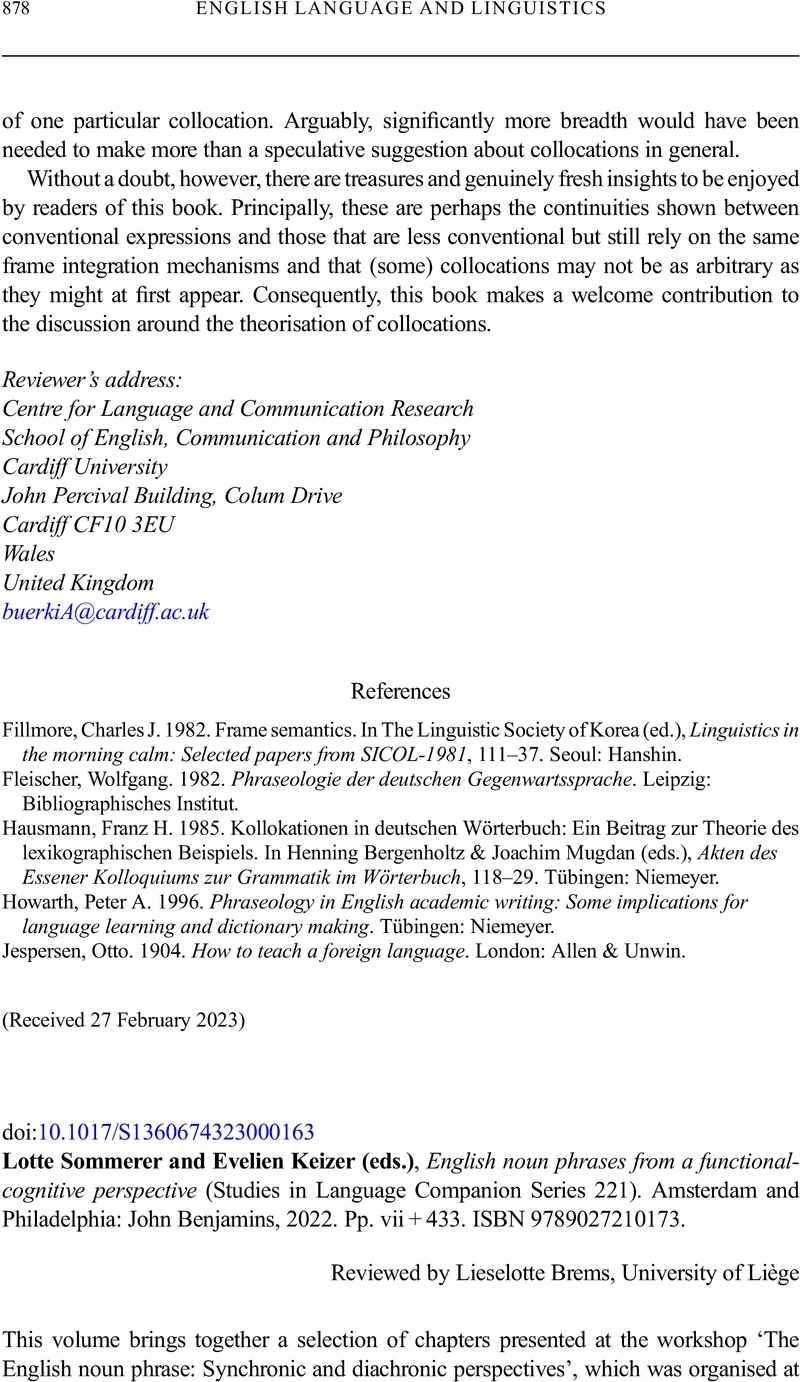No CrossRef data available.
Article contents
Lotte Sommerer and Evelien Keizer (eds.), English noun phrases from a functional-cognitive perspective (Studies in Language Companion Series 221). Amsterdam and Philadelphia: John Benjamins, 2022. Pp. vii + 433. ISBN 9789027210173.
Review products
Lotte Sommerer and Evelien Keizer (eds.), English noun phrases from a functional-cognitive perspective (Studies in Language Companion Series 221). Amsterdam and Philadelphia: John Benjamins, 2022. Pp. vii + 433. ISBN 9789027210173.
Published online by Cambridge University Press: 24 May 2023
Abstract
An abstract is not available for this content so a preview has been provided. Please use the Get access link above for information on how to access this content.

- Type
- Book Review
- Information
- Copyright
- Copyright © The Author(s), 2023. Published by Cambridge University Press



